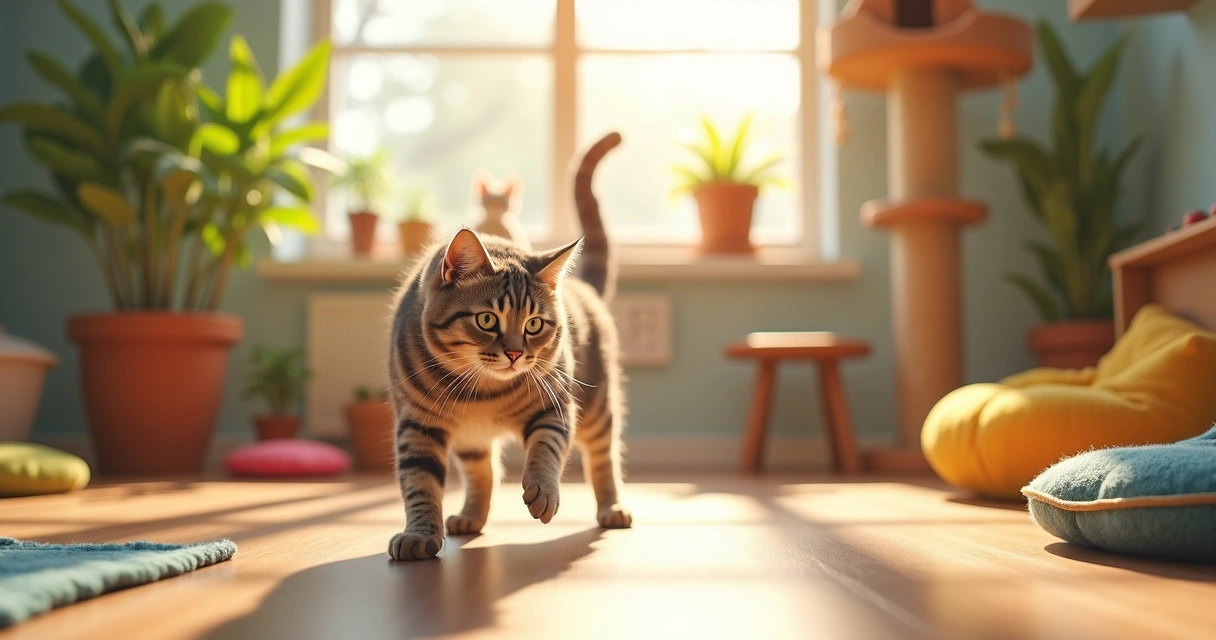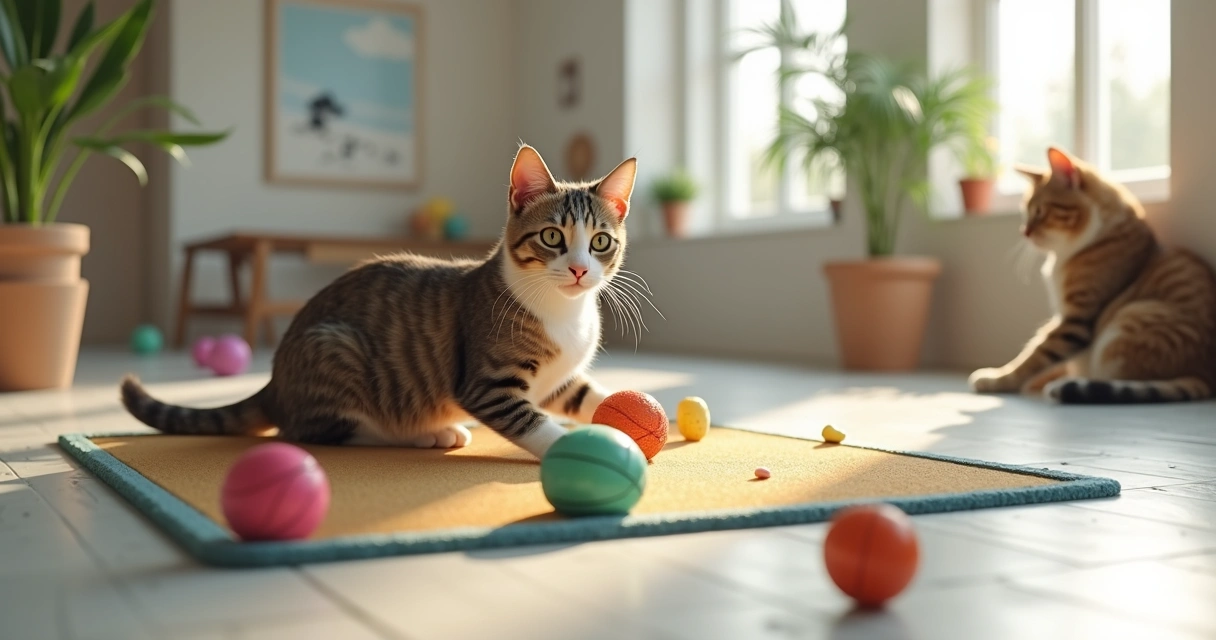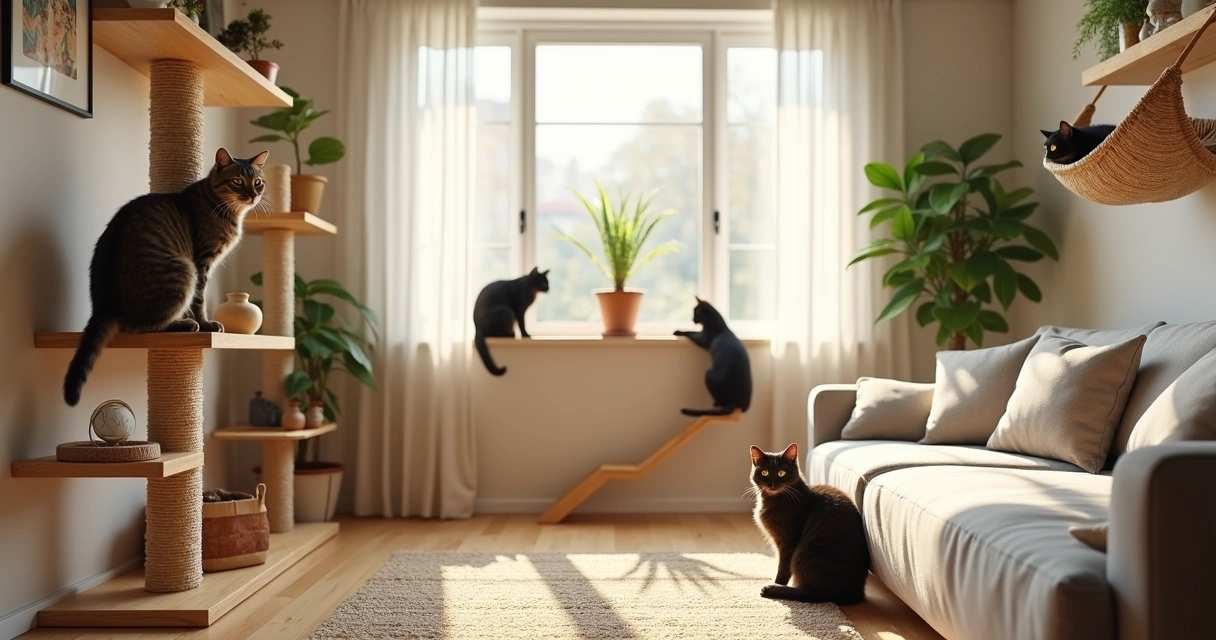If you’re like me, you know cats rarely shout for attention—at least not in words. Yet, their quiet pleas for more stimulation at home are there if you watch and listen. Many cat owners don’t realize how much an enriched environment can change their cats’ mood, health, and even the bond you share. I’ve seen over the years—sometimes too late—that kitties often hide signs of boredom or stress. When I started consulting with places like Dogtown, where daycare isn’t just about “babysitting,” my whole outlook shifted. Here’s how you can catch the signs your cat craves more than just a window perch and a bowl of kibble.
What is enrichment and why does it matter for cats?
First, let me answer a question I get almost every week: what does “enrichment” even mean? In practical terms, enrichment is all about giving cats chances to use their natural instincts—hunting, climbing, scratching, exploring—every single day. Without stimulation and variety, cats develop behaviors that can frustrate both pet and owner. This isn’t just my opinion; research published by the National Center for Biotechnology Information shows that enriched indoor environments help cats express natural behaviors, and in their absence, cats can redirect those instincts toward sofas, curtains, and even self-harm (see NCBI research).
Daycare environments like those offered at Dogtown create structured opportunities for enrichment—far past what most owners can manage at home. But let’s get specific. What are the signs your cat may be quietly asking for more?

1. Destructive or misplaced scratching
If you notice shredded upholstery or mysterious carpet rips, take note. In my house, my oldest cat once destroyed an entire armchair before I recognized what she needed—she was silently begging for more outlets to scratch, climb, and “hunt.” According to scientific studies, scratching is a natural behavior that helps cats relieve stress, mark territory, and stretch. When suitable scratching opportunities or new textures aren’t offered, cats will find their own “solutions.”
- Are your cat’s claws constantly snagging on curtains or furniture?
- Is shredding more intense after periods alone?
- Are regular scratching posts ignored?
If the answer is yes to any, structured enrichment like climbing towers, novel scratchers, and group play at a place like Dogtown can make a difference. Even something as simple as rearranging play spaces, adding food-puzzle toys, or scheduling daycare can redirect that destructive energy.
2. Excessive sleeping or lethargy
Some may say cats just “sleep all day.” That’s not quite true—healthy cats nap often, but should also show flashes of hunting, chasing, and climbing, even in later years. If you find your cat snoozing 20 hours daily, unmoved by feather wands or lasers, that’s sometimes a subtle warning sign. Satisfied cats switch between play and rest, while bored cats can shut down and become lethargic, even developing stress-related issues (supported by studies on emotional states in cats).
Snooze, play, repeat. That’s a happy cat cycle.
In my experience, once cats experience a stimulating daycare environment, their energy at home can transform. They find new curiosity, and even older or shy cats will perk up in response to safe, structured variety.
3. Over-grooming or obsessive behaviors
I’ve seen cats groom until their fur thins or their skin reddens, especially after a major life change—like a move, a new family member, or loss of a companion. Over-grooming is sometimes mistaken for “just cat stuff,” but it can signal frustration, anxiety, or even depression in cats. The NCBI says that negative emotional states often emerge when mental and physical needs aren’t being met, and enrichment can help alleviate these concerns (see more about cats and negative emotions).
- Have you noticed excessive licking, bald patches, or biting at fur?
- Is your cat chewing or sucking on fabrics?
These behaviors can improve dramatically with routine changes, stimulating environments, and positive routines like those in day camp programs. Sometimes, personal attention from trained daycare staff can help identify and address these issues before they worsen.
4. Changes in eating habits or interest in food
Bored cats can become over- or under-eaters. In my experience, cats left alone for long stretches may gorge out of stress, or the opposite—ignore meals entirely. Both can be indicators your cat isn’t finding enough stimulation. Novel feeding strategies such as food puzzles or foraging set-ups are highly effective at providing enrichment, as described in studies about puzzle toys and mental stimulation.
Many daycare facilities now incorporate scheduled feeding with interactive feeders or toys, offering cats challenges that mimic natural hunting behaviors. This isn’t about making it hard to eat—just fun and stimulating!
Food should be a game, not a chore.
Daycare staff at places like Dogtown also notice subtle appetite changes quickly, helping catch problems early. And if dietary issues persist, they may suggest additional support or grooming services to address underlying health or stress factors.
5. Social withdrawal or increased aggression
This one may surprise you. Even though some cats are solitary by nature, a sudden change—hiding under beds, refusing to interact, or showing “out of character” aggression—often points to unmet environmental needs (enrichment strategies and behavioral outcomes). I have seen shy cats at home blossom in structured settings where staff can tell when interaction is wanted and when solitude is needed. Just a few new social opportunities or fun encounters with carefully matched peers can rebuild lost confidence.
It’s that careful, individualized approach I admire most about the boarding options at Dogtown, where group sizes stay small and cats are grouped by temperament. It’s not about turning introverts into superstars, but about offering safe ways to reconnect and play. In my view, a little positive exposure can transform a withdrawn or grumpy cat.

How daycares like Dogtown integrate enrichment
Sometimes, owners hesitate to try daycare. But when I tour facilities like those at Dogtown, something stands out. Cats aren’t left to wander aimlessly—they follow unmistakably thoughtful routines. Each day brings new textures, climbing structures, customized feeding opportunities, and gentle social encounters (only when a cat is ready). Activities are built around SMARTR goals for behavioral improvement, so that even shy or anxious cats slowly gain confidence and contentment.
Enrichment isn’t just an “extra”—it’s at the heart of what makes cat daycare more than a convenience. When cats come home from a day of enrichment, owners report happier moods, reduced destructive behaviors, and better health overall.
Taking steps: What should you do next?
If you’ve spotted one or more of these five signs, your cat may benefit from more than just new toys at home. Book a pre-enrollment assessment at Dogtown and let qualified, caring staff develop an experience for your cat’s personality and needs. Explore options including structured daycare, positive training, or even short-term boarding if your cat craves more novelty and stimulation than your home environment allows.
I believe every cat deserves a life of comfort, curiosity, and calm. See how Dogtown’s tailored enrichment—including day camp, personalized training, and ongoing support—can make a lasting difference. Let your cat thrive, starting today.
Frequently asked questions
What is cat enrichment at daycare?
Cat enrichment at daycare means offering a variety of activities and settings that encourage natural cat behaviors such as climbing, hunting, scratching, exploring, and playing. This might include interactive toys, food puzzles, safe climbing structures, and opportunities for social time with staff or other cats. At Dogtown, the focus is on understanding each cat’s temperament and designing a routine that turns boredom into contentment.
How do I know my cat needs enrichment?
You may notice your cat acting out (scratching, biting, over-grooming), withdrawing, sleeping too much, eating differently, or becoming aggressive or fearful. If these behaviors seem out of the ordinary or increase when you’re away, it could signal your cat needs more daily challenges and engagement. Structured activities like those offered at specialized daycares can often quickly improve symptoms of understimulation.
Is cat daycare worth it for enrichment?
From my perspective, absolutely. Cat daycare adds structured, personalized stimulation that most owners simply can’t provide during a busy week. When enrichment is a daily routine—tailored to each cat’s needs—many negative behaviors disappear, and cats come home calmer and healthier. Plus, owners gain insights from trained staff, which helps you continue the improvements at home.
Where to find the best cat daycare?
Look for a facility that provides individual assessments, experienced staff, safety protocols, and a range of enrichment options—not just space to wander. Personalized care, like that offered at Dogtown in Gloucester, MA, stands out: their staff respect each animal’s needs, size, and temperament, with regular feedback to owners and a structured approach to play and socializing.
How much does cat daycare enrichment cost?
Costs for cat daycare can vary and often depend on location, facility quality, and services provided. Most daycares offer different packages—by day, week, or month—and may have à la carte options for enrichment activities, grooming, or training. At places like Dogtown, you can select from a variety of plans to fit your budget and your cat’s needs, with transparent pricing and no surprises.





